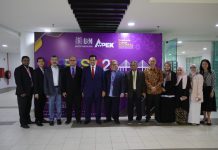World Cup 2018 scores big for eco-sustainability with remodelled soccer balls
MAASTRICHT, Netherlands: The new official soccer ball for World Cup 2018 contains the bio-based EPDM rubber Keltan Eco material.
The material comes from Arlanxeo, one of the world’s first leading suppliers of synthetic rubber.
The EPDM rubber (ethylene-propylene-diene monomer) Keltan Eco 6950 is the rubber basis for a sponge rubber layer directly underneath the “Telstar 18” ball’s outer cover.
It serves as a moldable cushion for the ball and supports optimal bounce characteristics during games. Materials that are used in this layer must meet strict requirements in properties such as density, hardness, and weight, and they must also demonstrate good processability.
The most important performance characteristic, however, is the elasticity and resilience of the layer.
“For us, ecological sustainability was a fundamental criterion in the selection of products for the World Cup soccer ball,” says Stefan Bichler, project manager of Football Operations at Adidas AG.
“We wanted to create the new soccer ball using high-tech materials that have impressive performance characteristics and are also sustainable.”
“Keltan Eco has the renowned quality characteristics as EPDM rubber that is made using fossil raw materials,” says Martin Kleimeier, project director and Global marketing manager for the Arlanxeo Keltan business line.
“With the full Keltan Eco portfolio, we have developed EPDM products that save resources, reduce our use of fossil-based products and also have a carbon footprint that is significantly lower than conventionally manufactured polymers,” adds Chretien Rooijakkers, head of global marketing for the Arlanxeo Keltan business line.
Keltan Eco is the world’s first EPDM rubber manufactured using bio-based ethylene extracted from sugarcane.
Depending on the ethylene content of each rubber grade, the proportion of bio-based material ranges between 50 and 70 percent.
Keltan Eco 6950 – the type used by Adidas – is characterised by its amorphous structure and high crosslinking density.
This leads to good low-temperature properties and meets the requirements for the best possible elasticity and resilience.
With six different grades of Keltan Eco rubber currently on the market, Arlanxeo is supporting the move towards more sustainable products and matching the ever stricter environmental requirements to help reduce its carbon footprint, whether in the sporting goods industry or the automotive industry.
In the latter, Keltan Eco is used,for example, in profiles for auto body seals, window profiles, and other seals. Other areas of application include artificial turf and athletics tracks.










